My treadmill connects to its controls via a DE-9 port interface and I'd like to reverse engineer it so I can control and monitor it via my computer instead. I would hope it perhaps uses RS232, but given that the only hardware solutions I've found for passthrough monitoring of serial communications are a bit expensive to purchase on a guess, does anyone have any recommendations on the cheapest way to get started on such a reverse engineering project?
-
Don't hope, measure. – Ignacio Vazquez-Abrams Dec 29 '13 at 23:58
-
Right, and I'm curious what sort of equipment people would recommend starting with to measure. I don't expect my volt meter will tell me all that much useful. If it wasn't nearly impossible to move around, I'd try taking it to a hackerspace and see what I could find out with the equipment there. I kind of expect the solution will be to build a simple pass through board, but then I still need some kind of solution for monitoring the voltages on each of the pins. – user1063042 Dec 30 '13 at 00:01
-
1The DMM would be a start. If you don't see +/-7-12V on the right pins then it's not RS232. – Ignacio Vazquez-Abrams Dec 30 '13 at 00:02
-
I agree with above - you'll probably need an oscilloscope if connections are digital - work out the baud rate, decode what the data is and formulate a way of talking to the threadmill. It might be a lot easier if there are just on-off connections to the treadmill but I doubt it. Have you contacted the suppliers to see what they say? There might be a market for this. – Andy aka Dec 30 '13 at 00:03
-
@IgnacioVazquez-Abrams Fair enough, I'll try that as start. – user1063042 Dec 30 '13 at 00:06
-
IF you're lucky and it is RS-232 or something related, you might be able to avoid need to use an oscilloscope if you know what to expect or if you're sufficiently lucky. The threadmill could be using something as simple as ASCII for control. In that case, just experiment with Baud rate settings until you get something that looks readable. Still, there's no guarantee that this will work. – AndrejaKo Dec 30 '13 at 00:07
-
@Andyaka The supplier in this case being the treadmill manufacturer? – user1063042 Dec 30 '13 at 00:08
-
Yes, who else LOL – Andy aka Dec 30 '13 at 00:10
-
RS232 usually on pins 2 & 3 – Russell McMahon Dec 30 '13 at 04:57
1 Answers
The advice in comments is good that for a start you should use a multimeter to confirm it is a standard RS-232 connection. Check for something between +/- 3V to 15V between pin 5 (signal ground) and pins 2 or 3 on the DE-9 connector which are either receive or transmit depending on whether the end you're checking is configured as a DTE (data terminal equipment) like a PC or DCE (data communications equipment) like a modem.
Even if you don't measure those voltages sometimes OEM equipment will use an RS-232 like protocol that only swings from 0-5V to save the cost of generating a negative voltage especially if it's only for use over a short distance between their own products. In practice that often works with a PC and USB to serial converters as well.
It if does looks like it may be a standard configuration here's a cheap adapter I made to intercept serial data a while back. Just use a pair of native serial ports or USB to serial converters along with a free terminal program like RealTerm. Depending on the complexity of the protocol you might also get away with monitoring a single side of the communications at a time with a single port.


- 17,131
- 37
- 56
- 91